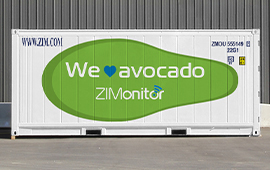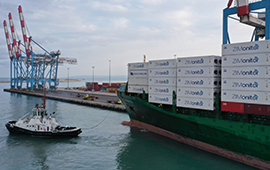The Vietnamese Dragon Fruit Craze
Vietnam, which is one of Asia’s major manufacturing hubs, is also a leading global exporter of refrigerated goods. Over the last two decades, the country’s agricultural trade has experienced a fast-paced growth, with top commodities including various seafoods like catfish and shrimp, as well as Asia’s exotic dragon fruit, which is a must-try for any fruit enthusiast.
Though native to the Americas, dragon fruit has long been cultivated in Southeast Asia and was introduced to Vietnam in the early 1900s. As its name suggests, this oval-shaped brightly colored fruit is covered in a thick magenta shell with pointy green horns, which are somewhat reminiscent of a dragon. Inside, you can see its white to pink seed-speckled flesh filled with tasty black seeds.
But don’t let its spiky exterior intimidate you. The dragon fruit has been found to bring multiple health benefits thanks to its nutritional value and powerful natural antioxidants. Also known as pitaya or strawberry pear, this tropical fruit tastes sweet and delicate with a crunchy feel and is often described as a cross between a kiwi and a pear.
Dragon fruit is currently cultivated in Vietnam’s major provinces and cities nationwide, with the purple-skinned and white-fleshed variety being the most popular. However, the central province of Binh Thuan has approximately 62,000 hectares of land devoted to the fruit. Binh Thuan is known for its sunny and dry climate, highlands, and close range to the ocean, a perfect environment for the fruit’s production resources. Each year, the province harvests over 700,000 tons of dragon fruit, of which 85% is exported to Vietnam’s largest market – China.
Thanks to the extensive cultivation area throughout Binh Thuan and new farming techniques Vietnamese farmers have developed a lightning technique in which dragon fruit trees are equipped with bright lights, enabling the year-round harvest of the fruit.
Vietnam is continuing to enjoy its fresh dragon fruit harvest season. Until just recently, its main export market, China, has limited imports into Shanghai, by tightening its customs control at land border crossings and strengthening quarantine measures as part of the “Zero COVID Policy”. This led to a dramatic change in demand for Vietnam’s dragon fruit exports to China. In response, almost 14,000 tons of fruit shipments from Vietnam were diverted into China’s Jiaxing market via the Port of Ningbo, which sits just South of Shanghai.
Today, as the situation stabilizes, dragon fruit shipments are expected to pick up starting July this year, to meet the high demands of China’s upcoming Mid-Autumn Festival. Additionally, the world’s largest free trade deal, the Regional Comprehensive Economic Partnership (RCEP) will greatly benefit the country and allow Vietnamese products, including the fresh dragon fruit, to access new international high-end markets such as Australia and New Zealand, maximizing the country’s export efforts in new destinations around the world. So, if you have yet to try the Vietnamese dragon fruit, now’s your chance!






